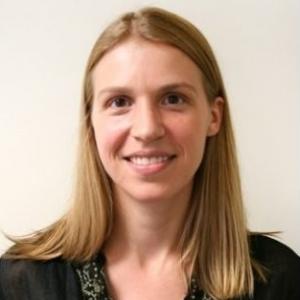Notes from SEEP 2015 - Women’s Economic Empowerment
This year’s SEEP Conference focused on inclusion and resilience, and included a Women’s Economic Empowerment track, sponsored by USAID and Feed the Future. The sessions in this track focused on women in market systems, and explored the connections between women’s economic, social, and political empowerment.
In one panel, Veyrl Adell, Associate Director for Regional Economic Empowerment at Women for Women International (WfWI), shared insights from a recent pilot program working with about 250 marginalized women in the DRC.
Through the pilot, WfWI lent smartphones to groups of women for a week at a time to see how they would make use of the technology. Before the study, only one of the women had owned a cellphone, but they figured out how to use the phones, often working in groups to figure out the new technology together. Three months later, WfWI followed up and found that the same groups of women had found the loaner phones so useful that they had pooled their savings to purchase a shared feature phone and individual SIM cards.
In addition, WfWI found that the women used the phone primarily for trade, not for family matters. They used it to arrange transportation, often across the border to Rwanda, saving hours and hours of time each week. They used it to communicate with their suppliers, so their orders would be ready when they arrived. And they used it to negotiate lower prices for goods and reach new clients. Some of the women had even begun to work with mobile money service providers, allowing them to protect their savings.
WfWI’s pilot provided additional evidence that simple technology like mobile phones can be transformative and can disrupt cycles of poverty and insecurity. By pooling their resources and working together, these women leveraged technology to unlock new business opportunities, save time, and save money – significantly boosting their incomes.
Throughout the SEEP conference, speakers explored the broader connections between economic, social, and political empowerment. One high-level takeaway was that improved social empowerment through community- and skill-building activities has been shown to increase confidence and create support networks, while giving women concrete skills or resources that they can apply to economic activity. Savings groups, female entrepreneurship opportunities and training, and women’s business councils are all means of promoting social empowerment with the ultimate goal of economic empowerment.
The data that exists on women’s empowerment forms a solid baseline of information from which more sophisticated monitoring and measurement of women’s economic empowerment can be conducted. The business case for engaging women has been made, and the focus in the development community is shifting from the why of women’s empowerment to the what and the how.
As data is collected and programs mature, there is a more universal understanding that simply collecting and reviewing sex-disaggregated data does not provide practitioners with the full picture of women’s engagement and empowerment through program interventions. Measurement tools such as the Women’s Empowerment in Agriculture Index (WEAI) and the Roadmap for Promoting Women’s Economic Empowerment and associated guidance note, Measuring Women’s Economic Empowerment, provide more sophisticated information about project impacts.
The practice of women’s economic empowerment has evolved significantly in recent years. Measurement tools and attitudes toward inclusion are more sophisticated and offer a broader range of options available to women who are seeking more economic and social autonomy. Strengthening the participation of all market actors improves the resilience of the system as well as the community, household, and individual actors that the system serves.
We caught up with Amit Vatsyanan of Oxfam at the SEEP Conference to hear his thoughts on women's economic empowerment. Check out what he had to say!


